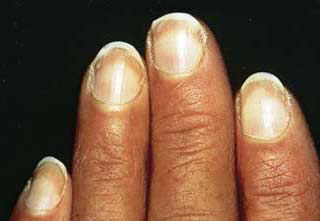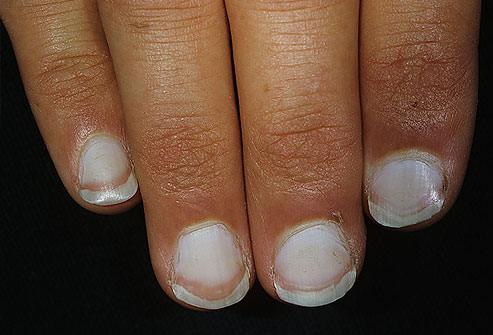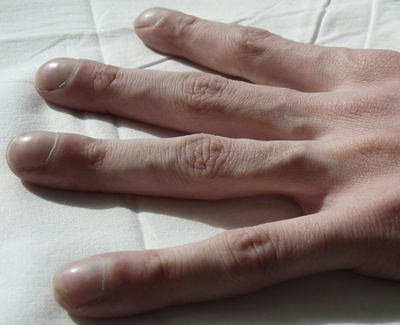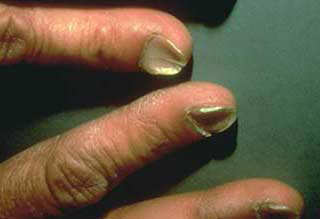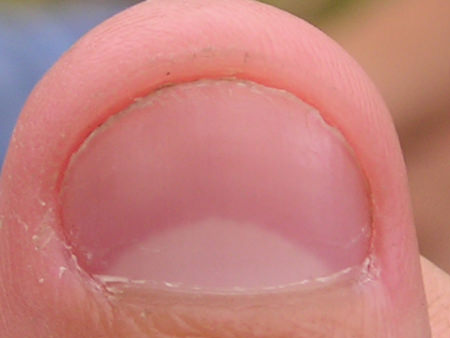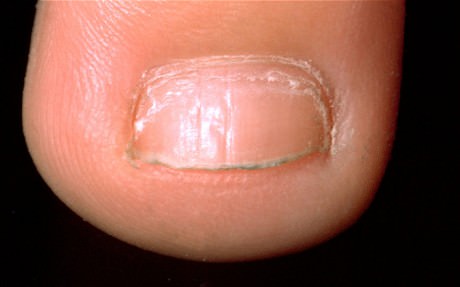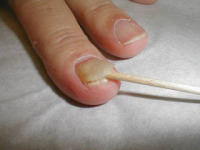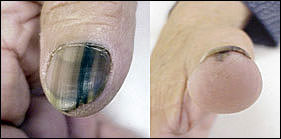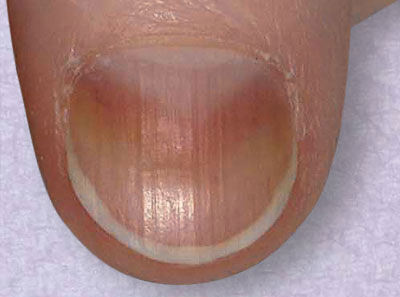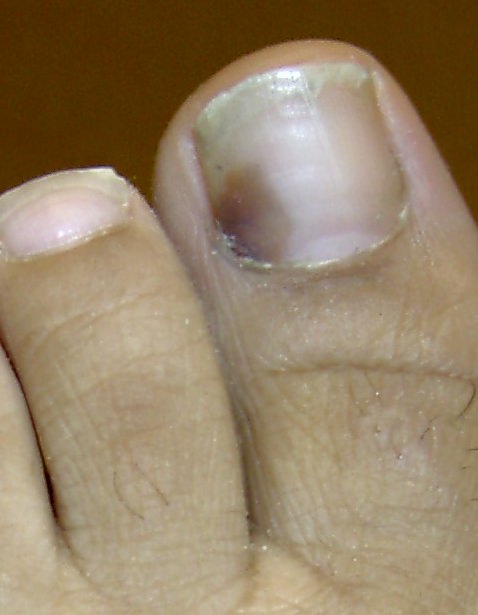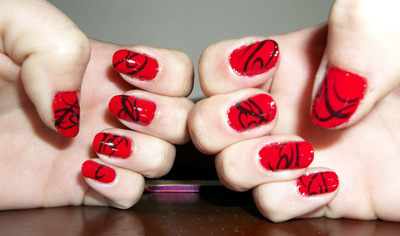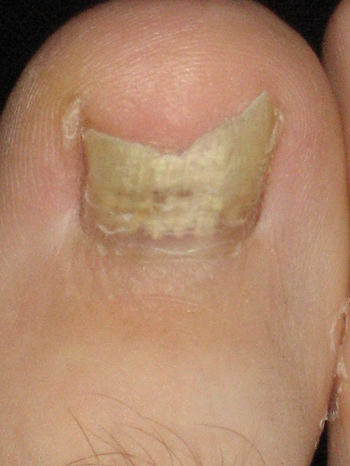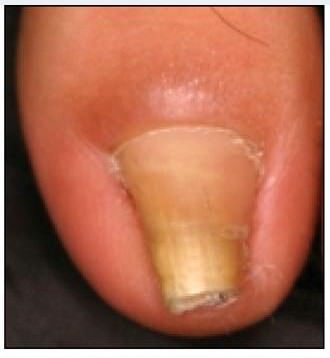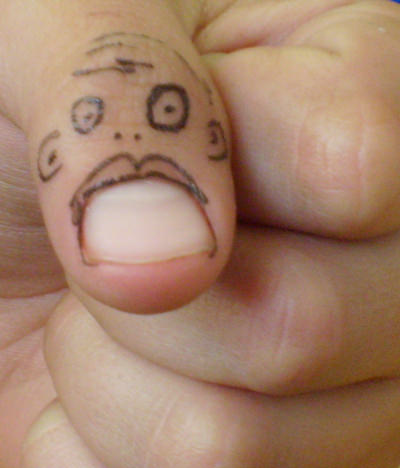PARASITES & BACTERIA
Whilst not the most pleasant of subjects, the field of parasites and bacteria is one worthy of study as they can often be the underpinning factor in many conditions. Virtually all forms of these entities can be eradicated.
Parasites
A parasite is an organism that lives in or on a second organism, called a host, usually causing it some harm. A parasite is generally smaller than the host and of a different species. Parasites are dependent on the host for some or all of their nourishment. For example, a tapeworm, a flattened worm that lives in the gastrointestinal tract of mammals, lacks an intestine of its own and must absorb predigested food from the intestine of its host. This food is the tapeworm's only energy source for growth and reproduction. Parasitism affects most life forms, from bacteria infected by the viruses known as bacteriophages, to humans, who are subject to more than 1000 parasites known to cause disease.
Types of parasites:
Hookworm: theseattach themselves to the intestinal wall using buccal capsule teeth. At maturity a Hookworm may lay more than 30,000 eggs a day.
Tapeworm: these are a type of flatworm that can colonize animal and human digestive tracts.
Heartworm: the adult worms are large, measuring up to 10 inches long, and they typically live in the right heart and pulmonary artery.
Roundworm: Its mouth consists of three, independent lips, each equipped with small piercing projections.
|
There are also parasites that invade the liver. One such parasite is called a liver "fluke". This is a worm-like organism that we can pick up from eating meats, and sometimes if we let dogs or other animals lick us on the mouth we can get worms, flukes, or other parasites that way. These can cause Fascioliasis. Fascioliasis is an infectious disease caused by
Fasciola parasites, which are flat worms referred to as liver flukes. The adult (mature) flukes are found in the bile ducts and liver of infected people and animals, such as sheep and cattle. In general, fascioliasis is more common in livestock and other animals than in people.
Two
Fasciola species (types) infect people. The main species is
Fasciola hepatica, which is also known as "the common liver fluke" and "the sheep liver fluke." A related species,
Fasciola gigantica, also can infect people.
Intestinal parasites
Introduction
The two main types of intestinal parasites are helminths and protozoa. Helminths are worms with many cells. Tapeworms, pinworms, and roundworms are among the most common helminths . In their adult form, helminths cannot multiply in the human body. Protozoa have only one cell, and can multiply inside the human body, which can allow serious infections to develop. Intestinal parasites are usually transmitted when someone comes in contact with infected feces (for example, through contaminated soil, food, or water). The most common protozoa are giardia and cryptosporidium.
Signs and Symptoms
Parasites can live within the intestines for years without causing any symptoms. When they do, symptoms include the following:
- Abdominal pain
- Diarrhea
- Nausea or vomiting
- Gas or bloating
- Dysentery (loose stools containing blood and mucus)
- Rash or itching around the rectum or vulva
- Stomach pain or tenderness
- Feeling tired
- Weight loss
- Passing a worm in stools
While intestinal parasites can cause a multitude of symptoms, here are five general warning signs to keep an eye out for:
- Changes in the appearance or frequency of bowel movements, especially if you have excessive diarrhea or loose stools for two weeks
- Chronic exhaustion not resolved by a week of restful sleep
- Unexplained and sudden weight loss of at least 10 pounds over two months
- Itching around the anus for at least two weeks, especially if there is no rash
- Cramping and abdominal pain
Here are the signs and symptoms of four common parasitic infections:
Trichinella: Infection with the microscopic parasite
Trichinella leads to trichinellosis, also known as trichinosis. People contract the parasite by eating raw or undercooked meat from infected animals. Initial signs and symptoms include diarrhea and abdominal cramping. As the infection progresses over the course of about a week, symptoms may become more severe and include high fever, muscle pain and tenderness, swelling of the eyelids or face, weakness, headache, light sensitivity and pink eye (conjunctivitis).
Hookworm: Hookworm infects an estimated 576 to 740 million people worldwide and was once a common infection in the U.S., particularly in the southeast. Fortunately, the number of infections has dropped thanks to improved living conditions. Hookworms are a type of helminth, or parasitic worm, that you can get by walking barefoot on contaminated soil. Most people with a hookworm infection have no symptoms, but because the worm's larvae can penetrate skin, an early sign of infection could be an itchy rash at the site of exposure. Digestive complaints may follow, with nausea, diarrhea, vomiting, abdominal pain that is worse after eating and increased flatulence. If infection persists, anemia and nutrient deficiencies may result.
Dientamoeba Fragilis: This parasite is one of the smaller parasites that can live in the large intestine. How it spreads is unclear, but is likely related to oral contact with infected fecal material (yet another reason to wash your hands before eating). In the acute infection, diarrhea and abdominal pain are the most common symptoms, with diarrhea being more predominant, lasting for one to two weeks. Stools tend to be greenish brown and watery or sticky. In chronic infection, abdominal pain is usually the dominant symptom, but people may also have loss of appetite, weight, nausea, vomiting, bloating or flatulence.
Pinworm: Pinworms are small, thin, white worms that most commonly infect children but are also contagious and may affect adults. The worm's eggs may be carried to surfaces including hands, toys, bedding, clothing and toilet seats and must be ingested to cause infection. After an incubation period of at least one to two months, the main symptom is itching around the anus, which may be particularly bad at night. Disturbed sleep or abdominal pain may also result.
Complications of Intestinal Parasite Infections
- Dehydration from diarrhea or vomiting must be treated medically if severe. If dehydration is not serious, drink adequate amounts of pure water, and use an electrolyte replacement solution.
- Iron deficiency anemia is often found with hookworm infestation. The severity of the deficiency is proportionate to the number of hookworms present.
- General malnutrition is due to competition for nutrients by the parasites, and from malabsorption of nutrients due to inflammation and damage to the intestinal mucosa.
A nutritious diet feeds the parasites, but helps to boost the host's immunity. Intestinal human parasites thrive on sugar, so a diet high in junk food and sweets will feed the parasites while lowering the immune defenses of the host.
- Studies have shown that roundworm and giardia infestation interferes with the absorption of Vitamin A resulting in a deficiency. Vitamin A is especially important for increasing resistance to tissue penetration by parasitic larvae.
- Some tapeworms compete for Vitamin B12 and cause a B12 deficiency.
- Immune system dysfunction - human parasites decrease the secretion of immunoglobulinA. IgA is a type of antibody that protects against bacterial and viral infections of the mucous membranes lining the digestive tract and respiratory system.
Chagas’ Disease
Chagas' disease is a parasitic infection endemic in many rural areas of Latin America as well. Chagas' disease is an infection caused by a protozoal parasite transmitted by contact with the feces of the vinchuca bug. The vinchuca depends on blood for survival. It comes out to feed at night, attracted to the exposed parts of the body, especially the face. During its feeding, it contaminates the wound with its feces, introducing the parasite which causes the disease.
Following a bite, usually on the skin of the eyelid or on the conjunctiva, a hard, violet-hued swelling called a "chagoma" appears after one week. Eventually the parasites reach the heart, liver, brain, or spleen, causing an acute form of the disease in about two percent of patients, especially small children, resulting in fever, a generalized rash, anorexia, diarrhea, vomiting, swollen lymph nodes, and an enlarged liver. Meningoencephalitis can occur and may cause death in children.
In adults, an acute infection of the heart is the main result, damaging the heart muscle. Most of the victims of Chagas' disease survive the acute heart infection, the symptoms subside within four to eight weeks, and the person continues to live an apparently healthy life. The disease however progresses and goes on unrecognized, remaining undiagnosed until a routine blood test may disclose it. The disease finally surfaces after 10 to 20 years in the form of chronic heart disease, as the infected heart muscle fibers are slowly replaced by scar tissue, thinning the walls of the heart, severely affecting heart function, and ultimately resulting in death. The nervous system may also be affected causing convulsions, paralysis, and brain damage.
BACTERIA.
The presence of unfriendly microorganisms in the digestive tract can also be a factor which contributes to the development of food allergies. Intestinal bacteria, which in a healthy person will be predominantly “friendly” types, and their human host ideally should live in harmony. The bacteria do a myriad of health-promoting things for the person. This state is called “symbiosis.”
In the absence of friendly bacteria, then a state of dys-symbiosis, or dysbiosis exists. Dysbiosis can be caused by yeast (
Candida albicans, other
Candida species,
Torulopsis glabrata, and others); or bacteria (
Salmonella, Shigella, Campylobacter jejuni, Yersinia enterocolitica, Klebsiella pneumoniae, Citrobacter freundii, Citrobacter diversus, Proteus mirabilis, Pseudomonas aeruginosa, some strains of
Escherichia coli, Staphylococcus aureus, some strains of
Bacteriodes, Clostridium difficile, and others). Some of these organisms are not considered “pathogenic” by conventional medicine. However, weak pathogens, or a predominance of “unfriendly” organisms can cause severe illness in a chronically ill, weakened, or malnourished patient. The eradication of these organisms can make a dramatic difference in the patient’s health.
A very common cause of bacterial or fungal dysbiosis is often the repeated or long term use of antibiotics. Antibiotics kill both the bacteria you want them to kill and the “friendly” bacteria in the intestine and the vagina. This leaves these areas open to be colonized by yeast, unfriendly bacteria, and parasites.
Testing
1.
A fecal (stool) exam, also called an ova and parasite test (OCP)
This test is used to find parasites that cause diarrhea, loose or watery stools, cramping, flatulence (gas) and other abdominal illness. CDC recommends that three or more stool samples, collected on separate days, be examined. This test looks for ova (eggs) or the parasite.
Your health care provider may instruct you to put your stool specimens into special containers with preservative fluid. Specimens not collected in a preservative fluid should be refrigerated, but not frozen, until delivered to the lab or the health care provider’s office.
Your may request that the lab use special stains or that special tests be performed to look for parasites not routinely screened for.
2.
Endoscopy/Colonoscopy
Endoscopy is used to find parasites that cause diarrhea, loose or watery stools, cramping, flatulence (gas) and other abdominal illness.
This test is used when stool exams do not reveal the cause of your diarrhea.
This test is a procedure in which a tube is inserted into the mouth (endoscopy) or rectum (colonoscopy) so that the doctor, usually a gastroenterologist, can examine the intestine.
This test looks for the parasite or other abnormalities that may be causing signs and symptoms.
3.
Blood tests
Some, but not all, parasitic infections can be detected by testing your blood. Blood tests look for a specific parasite infection; there is no blood test that will look for all parasitic infections. There are two general kinds of blood tests that your doctor may order:
1. Serology
This test is used to look for antibodies or for parasite antigens produced when the body is infected with a parasite and the immune system is trying to fight off the invader.
2. Blood smear
This test is used to look for parasites that are found in the blood. By looking at a blood smear under a microscope, parasitic diseases such as filariasis, malaria, or babesiosis, can be diagnosed.


